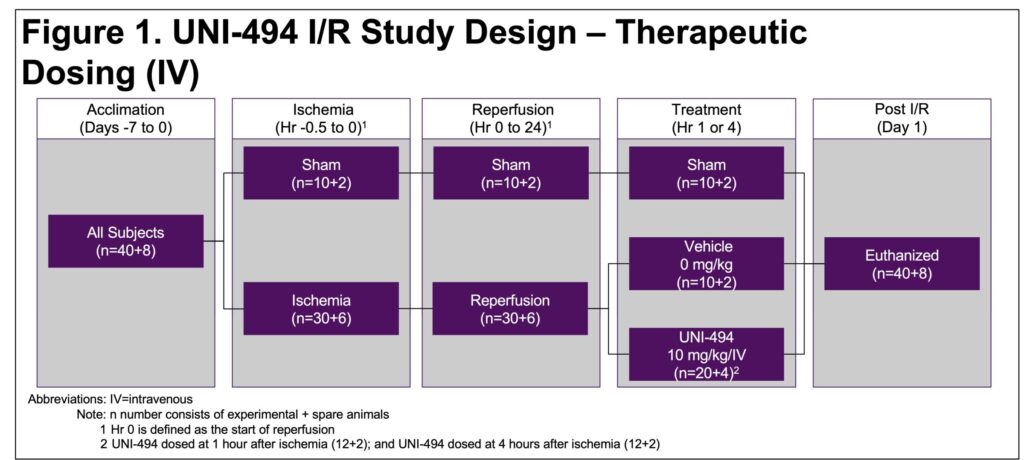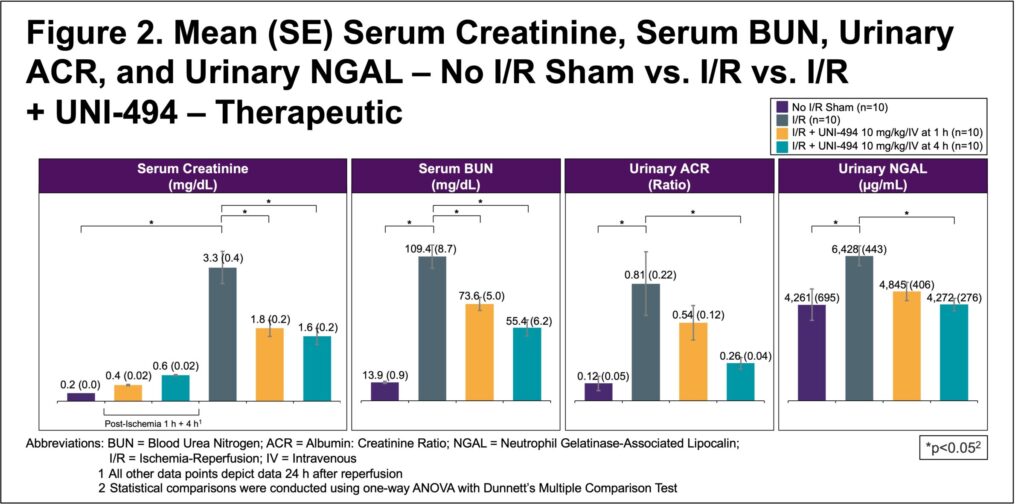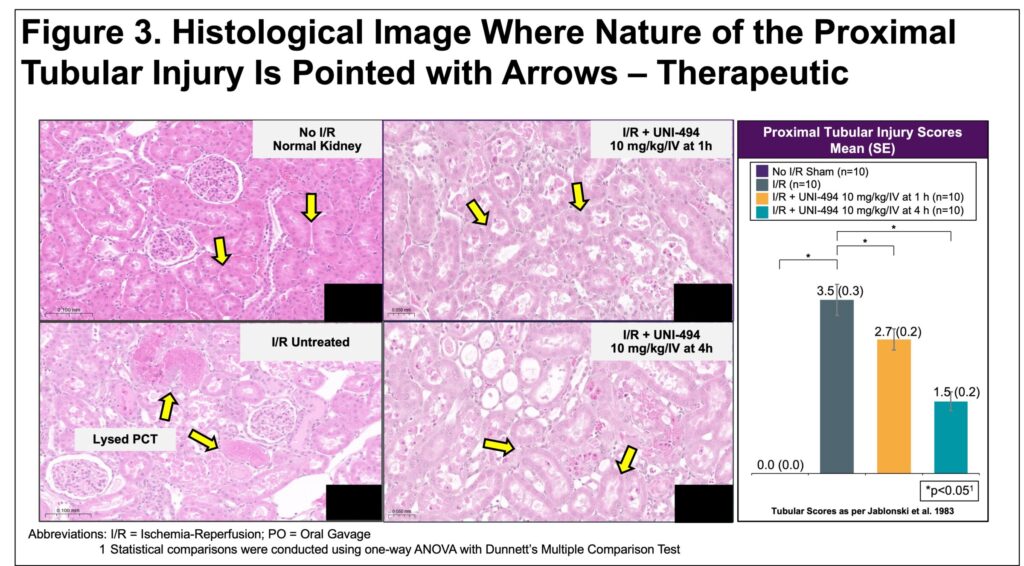Satya Medicherla1, PhD; Guru Reddy1, PhD; Shalabh Gupta1, MD
1Unicycive Therapeutics, Inc., Los Altos, CA
Background
- Currently, there are no effective treatments for acute kidney injury (AKI) approved by the US Food and Drug Administration or the European Medicines Agency (EMA); management of the condition is primarily supportive1, 2
- Inflammation and reactive oxygen species driven mitochondrial permeability transition pore (mPTP) opening causes mitochondrial dysfunction/swelling and cell death3-7
- This is implicated in acute diseases originating from ischemia-reperfusion (I/R) injury or delayed graft function (DGF)3-7
- Furthermore, unresolved inflammation exacerbates sustained mPTP opening, evident in chronic kidney diseases (CKD)8, 9
- UNI-494, a selective mitochondrial ATP-sensitive potassium channel activator, reverses mitochondrial dysfunction by closing the mPTP

OBJECTIVE
We present results from a study evaluating the in vivo efficacy of intravenous (IV) UNI-494 when administered therapeutically after unilateral renal ischemia-reperfusion (I/R) in a rat model of AKI, which is a well-established model of delayed graft function (DGF) (Cavaille-Coll, 2013)
Methods
- Rats were anesthetized, right kidney removed, ischemia induced injury by clamping renal vessels in left kidney (30 minutes)
- After 1 or 4 hours of reperfusion with established renal injury confirmed by elevated serum creatinine (sCr), 10 mg/kg of UNI-494 was administered IV (Figure 1)
- After 24 hours reperfusion in metabolic cages, blood samples were collected for sCr and blood urea nitrogen (sBUN) levels, and urinary samples collected for albumin-creatinine ratio (uACR) and neutrophil gelatinase-associated lipocalin (uNGAL)
- At necropsy, clamped left kidney was collected and processed for histology for tubular injury scores

Results
- I/R induced significant increases of sCr, sBUN, uACR, uNGAL, and proximal tubular injury scores in the vehicle treated I/R group when compared to no I/R sham group (p<0.05 – as per one-way ANOVA with Dunnett’s comparison test)
- A single IV dose of 10 mg/kg of UNI-494 improved kidney functional markers sCr, sBUN, uACR, the tubular injury marker uNGAL (Figure 2), and proximal tubular injury scores (Figure 3)



CONCLUSIONS
- Single IV doses of 10 mg/kg of UNI-494 administered after I/R significantly reduced serum and urinary AKI markers and improved proximal tubular injury scores
- These data indicate therapeutic administration of UNI-494 slows down, or even halts/reverses, AKI progression
DISCUSSION
- UNI-494 is a potential candidate for prevention of DGF and other AKI clinical conditions
- The mechanism of this potential therapeutic effect should be further investigated
- Studies evaluating this promising treatment in the target population of patients with AKI should be conducted
References:
1. Kuno A. et.al., Basic Res Cardiol. 2007. Jan.
2. Sxeto HH., J Am Soc Nephrol. 2017. Oct.
3. de Mello AH. et.al., Life Sci. 2018. Jan.
4. Sharov VG. et.al., J Mol Cell Cardiol. 2007. Jan.
5. Mishra J. et.al., Cells. 2019. Sep.
6. Kinnally KW. et.al., Biochim Biophys Acta. 2011. Apr.
7. Endlicher R. et.al., Cells. 2023. Apr.
8. Kent AC. et.al., Oxid Med Cell Longev. 2021. Jan.
9. Irazabal MV. et.al., Cells. 2020. May.
Acknowledgments:
Writing support was provided by Xelay Acumen Group, Inc., and funded by Unicycive Therapeutics, Inc.